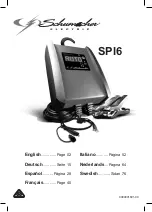
INTRODUCTION
PRELIMINAR STUDIES AND CONSIDERATIONS
MAINTENANCE AND DAMAGE PREVENTION
WORK ON BASIC VEHICLE
MOUNTING AND CONSTRUCTION
POWER TAKE-OFF
ELECTRIC AND ELECTRONIC SYSTEMS
APPENDIX
V1.0, February 2015
Body Builder Manual Part II, Specific Book LCV
85
For th proper soundproofing of the vehicle, a number of recommendations can be
followed:
- Do not disassemble or modify the soundproofing parts assembled in factory.
- The installation of insulating materials in the vehicle should be as continuous
and homogeneous as possible. Do not leave gaps through which the noise can
pass.
- Insulation materials must be fixed in a durable manner, to ensure that the mate
-
rial does not break off, as this would cause the ingress of noise into the vehicle.
- The most suitable materials must be selected for each case, such as carpets,
foams, aerosols or other insulators; or even a combination of these products, in
order to achieve maximum damping of noise. These cushioning materials absorb
sound waves, eliminate resonance and decrease vibration. They should be
materials that do not ignite easily, are impermeable to water and environmen
-
tally friendly. They must be lightweight materials that do not increase the
unladen weight of the vehicle. It is advisable to contact a specialised manufac
-
turer in order to choose the most appropriate materials to meet all require
-
ments as well as possible.
- All new equipment and groups installed in the vehicle, such as additional batter
-
ies, mud guards, wind deflectors, etc., must be properly fixed, so as not to cause
vibration.
- The original ventilation ducts should not be covered when insulating the inside
of the vehicle. If new ventilation ducts are made due to the transformation of
the vehicle, it is recommended that they be placed as far as possible from
sources of noise.
- Care should be taken not to impair the proper operation of the different groups
of the vehicle, and to allow the perfect mobility of the mobile elements. The
Body Builder will ensure that they do not affect safety systems such as airbags,
seat belts, sensors.
- It is advisable to place insulating linings on the floor of the vehicle, to reduce
the road noise in the interior. The coating of these liners is usually made of
foam or tar. Because of its density, it decreases wind noise and the wheel noise
that emerges from the bottom of the vehicle. It is recommended that a wooden
floor between 12 and 14 mm thick should be installed above this lining. Next,
carpet or mats are placed over this wood, to create proper insulation and an
optimum visual appearance. The seats or any other component installed in the
vehicle that would hinder the task must be disassembled.
















































